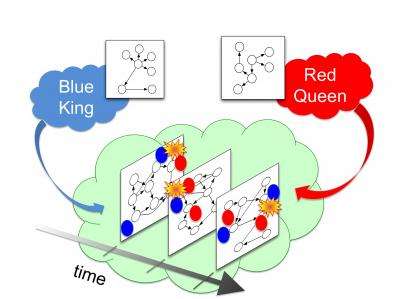July 1, 2011 report
Predicting random violence by mathematics

(PhysOrg.com) -- In a new study published in Science, researchers, led by physicist Neil Johnson from the University of Miami, show that attacks by groups such as the Taliban or Hezbollah may seem sporadic, they eventually begin to follow a mathematical pattern.
The researchers looked through public data of military fatalities during the period of 2003 to 2010 in Iraq as well as a ten year period of fighting throughout Afghanistan. Using an open-access software, the researchers discovered that after an initial gap between the first two attacks, the attacks that follow seem to come faster and more frequent, but begin to follow a mathematical pattern.
This gradual increase and predictability of attacks seems to point to the facts that, essentially, practice makes perfect. The more the insurgents execute attacks, the easier and more predictable they become. The interval between the first two attacks is the key to predicting future attacks. The researchers were able to devise an equation, based on this interval, which is able to estimate the course of subsequent attacks.
The researchers tested this equation on over 3000 fatal terrorist attacks throughout the world and in all tests; the escalation of subsequent attacks estimated by the equation closely matched the actual outcomes.
Johnson and his team are currently working on a larger study which is being funded by the United States Office of Naval Research in the hopes of better being able to estimate civilian and military fatalities. Johnson also believes that this new equation will be able to predict cyber-attacks as well as ground attacks.
More information: Pattern in Escalations in Insurgent and Terrorist Activity, Science 1 July 2011: Vol. 333 no. 6038 pp. 81-84. DOI:10.1126/science.1205068
ABSTRACT
In military planning, it is important to be able to estimate not only the number of fatalities but how often attacks that result in fatalities will take place. We uncovered a simple dynamical pattern that may be used to estimate the escalation rate and timing of fatal attacks. The time difference between fatal attacks by insurgent groups within individual provinces in both Afghanistan and Iraq, and by terrorist groups operating worldwide, gives a potent indicator of the later pace of lethal activity.
© 2010 PhysOrg.com

















